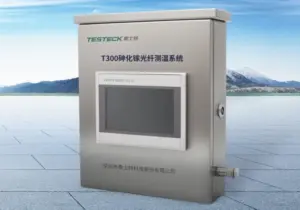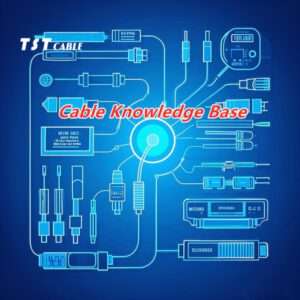
- Home
- /
- train control system
Application of Cables in Rail transit train control system
1.Scene Introduction
Rail transportation on-board signal system is a key component to ensure the safe and efficient operation of trains. With the continuous progress of rail transportation technology, the complexity and precision of on-board signal system are also increasing. As the medium of signal transmission, cable plays a pivotal role in on-board signal system, and its performance directly affects the quality of signal transmission and the stability of train operation.
2. The pain point analysis
Traditional on-board signaling system cables may face the following problems in application:
Signal attenuation and distortion: when transmitting over long distances or at high speed rates, the signal may be attenuated or distorted.
Electromagnetic interference: serious electromagnetic interference in the train environment may affect the transmission quality of the signal cable.
Insufficient mechanical strength: vibration and shock generated during train operation may cause damage to the cable.
Poor performance of high temperature resistance: the performance of the cable decreases in high temperature environment, and even aging and short-circuit occurs.
3. The rail transit on-board signaling system on the cable requirements
In order to meet the needs of on-board signaling system, the cable should have the following requirements:
Power cables: power cables are essential for supplying power to various components of the signaling system (including control units, sensors and communication devices). These cables need to be low or medium voltage and be able to withstand vibration and temperature changes in the train environment.
Control cables: Control cables are used to transmit control signals between the different components of the signaling system, such as control units, sensors and actuators. These cables should have excellent electrical conductivity, insulation and mechanical durability to ensure reliable signal transmission.
Communication cables: Communication cables (including fiber optic cables) are critical for transmitting data between trains, control centers and other subsystems. Fiber optic cables provide high-speed, reliable data transmission for real-time communication and precise train positioning.
Low attenuation and distortion: ensure the stability of signal transmission over long distances and at high rates.
High anti-interference capability: maintains signal accuracy in complex electromagnetic environments.
High mechanical strength: able to withstand vibration and impact in train operation.
Excellent high-temperature resistance: maintain stable performance in high-temperature environments.
4.Certification Standards
On-board signaling system cable products should meet the following certification standards:
Meet the relevant national or regional electrical product safety standards.
Meet the specific specifications and requirements for signal cables in the rail transportation industry.
Pass the electromagnetic compatibility (EMC) test to ensure stable signal transmission under electromagnetic interference environment.
5.Cable Selection
According to the special requirements of on-board signaling system, we recommend the following cable selection:
Shielded twisted-pair cable: adopts multiple shielding structure to effectively suppress electromagnetic interference; twisted-pair design reduces signal attenuation and improves transmission efficiency.
Flame-retardant cable: adopting flame-retardant materials, reducing the risk of fire and improving the safety of train operation.
Selection parameters for reference (can be customized according to actual demand)
Rated voltage: 300VAC
Temperature range: -40°C to 90°C
Bending radius: 6D (D refers to the outer diameter of the cable)
Characteristic impedance: 120Ω+12Ω (0.75~3MHz)
Tinned copper
Resistant to oxidation
High conductivity
Wear-resistant
Antioxidant
No deformation
6.Product Characteristics
High transmission rate: supports high-speed data transmission, ensuring the real-time and accuracy of the signal.
Low attenuation: adopting high-quality materials and advanced technology to reduce the attenuation of the signal in the transmission process.
Strong anti-interference: multi-layer shielding design, effectively resist external electromagnetic interference.
High mechanical strength and high temperature resistance: special materials and structural design to improve the durability and reliability of the cable.
Recommended Products
Cables play a vital role in the train control systems of rail transit vehicles, facilitating signal transmission and power supply. Optimizing the application of cables in rail transit vehicle train control systems can improve system efficiency and reliability.
7. Technical Test
To ensure the performance and quality of the vehicle signaling system cable products, TST CABLES has conducted a series of rigorous technical tests, including:
Electrical performance test: Test the electrical parameters such as conductivity and insulation resistance of the cable to ensure compliance with the design requirements.
Anti-electromagnetic interference test: simulate the electromagnetic environment during train operation to test the cable’s anti-interference ability.
Environmental adaptability test: the cable will be placed in high temperature, low temperature, humidity and other harsh environments for a long time to test and verify its environmental adaptability.
8. Cable laying installation and commissioning
In the process of cable laying and installation, TST CABLES will formulate a reasonable cable routing plan according to the layout of the on-board signaling system and the spatial structure of the train. At the same time, TST CABLES provides professional commissioning guidance to assist customers to complete the connection and commissioning of cables and signaling equipment to ensure the normal operation of the system.
9. After-sales maintenance & technical support
TST CABLES provides comprehensive after-sales maintenance and technical support services, including regular inspection, troubleshooting, repair and replacement of on-board signaling system cables. Our professional team will provide customers with technical support and solutions at any time to ensure the stable operation of the vehicle signaling system cables and customer satisfaction, and problems encountered can be resolved in a timely manner.
10. Practical application examples and related data
In the metro project in Shenzhen, a large city in China, TST CABLES provides high-performance on-board signaling system cables. After a long period of actual operation test, TST CABLES performs well. The data shows that under high-speed operation and complex electromagnetic environment, the on-board signaling system cables can still maintain stable signal transmission quality, the transmission rate meets the design requirements, and there is no failure or signal distortion. In addition, the mechanical strength and high temperature resistance of the cable have also been fully verified. This successful case fully proves the reliability and superiority of our cable solutions in rail transit on-board signal system applications.
Other solutions for cables in railway applications.
WHY CHOOSE TST
10 years of experience
Specializing in the production of railway cables for 10 years
Engineer-to-engineer one-on-one support
Engineers provide one-on-one service to assist with product selection and problem-solving
Customization according to requirements
With a strong R&D team, we support customized cables based on specific needs
Quality certification
Stringent adherence to industry standards, complete certification
Fully testing facilities
Various tests based on customer requirements
10,000 ㎡ factory
Welcome to visit our factory face to face
RELATER NEWS
Also available in:
Arabic
English
German
Indonesian
Japanese
Russian
Spanish
Thai
Vietnamese
Portuguese (Brazil)





